Forget ‘Big Goat’ Propaganda, Geese Are Better at Mowing And Always Have Been
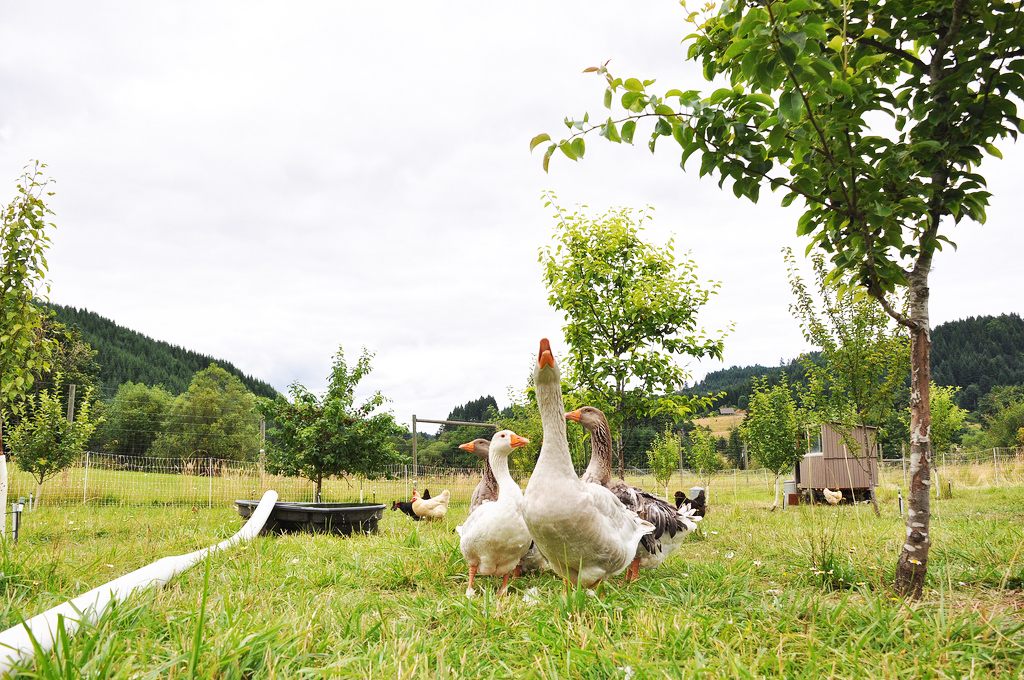
Geese on an organic farm, doing some lawn work (Photo: NCRS Oregon)
In the mid-1980s, after he had retired to Texas, Tom Walker went to Arkansas with one purpose in mind. He wanted to buy some geese.
“When I was a kid growing up,” he says, “there were geese all around, and they were simply called geese.” He’s almost 89 now, so this was in the 1930s and 40s. Back then, the geese had many purposes on a farm (providing eggs, down, meat), but the farmers in Arkansas, where Walker grew up, also kept gaggles around for a surprising reason: the geese would weed the farmers’ fields.
“You let them in your cotton field, and they’d eat the grass,” says Walker. “They don’t like cotton stalks, so they don’t eat the cotton.”
These geese that Walker remembered, even if they didn’t have a name, were of a particular breed, with pink bills and pink feet. But in Arkansas in the ’80s, they were nowhere to be found. “There are a few old codgers still around like me that remember them,” he says. “But they had disappeared from the scene.”
Goats that eat grass might be trendy now, but domesticated geese may have been the original animal landscapers. They had been weeding fields going back decades, maybe even centuries. But in America the practice nearly died out when pesticides took over the job of weed-killing.
Not entirely, though. Weeder geese can still be found in certain orchards and fields across the country, cleaning out the unwanted plants growing between rows of crops. When Walker set out to find the geese he grew up, slowly, he was able to gather together enough to make a gaggle. And one farm in southern California has built the world’s largest flock of the geese that Walker remembered from his youth—the birds now called Cotton Patch geese.
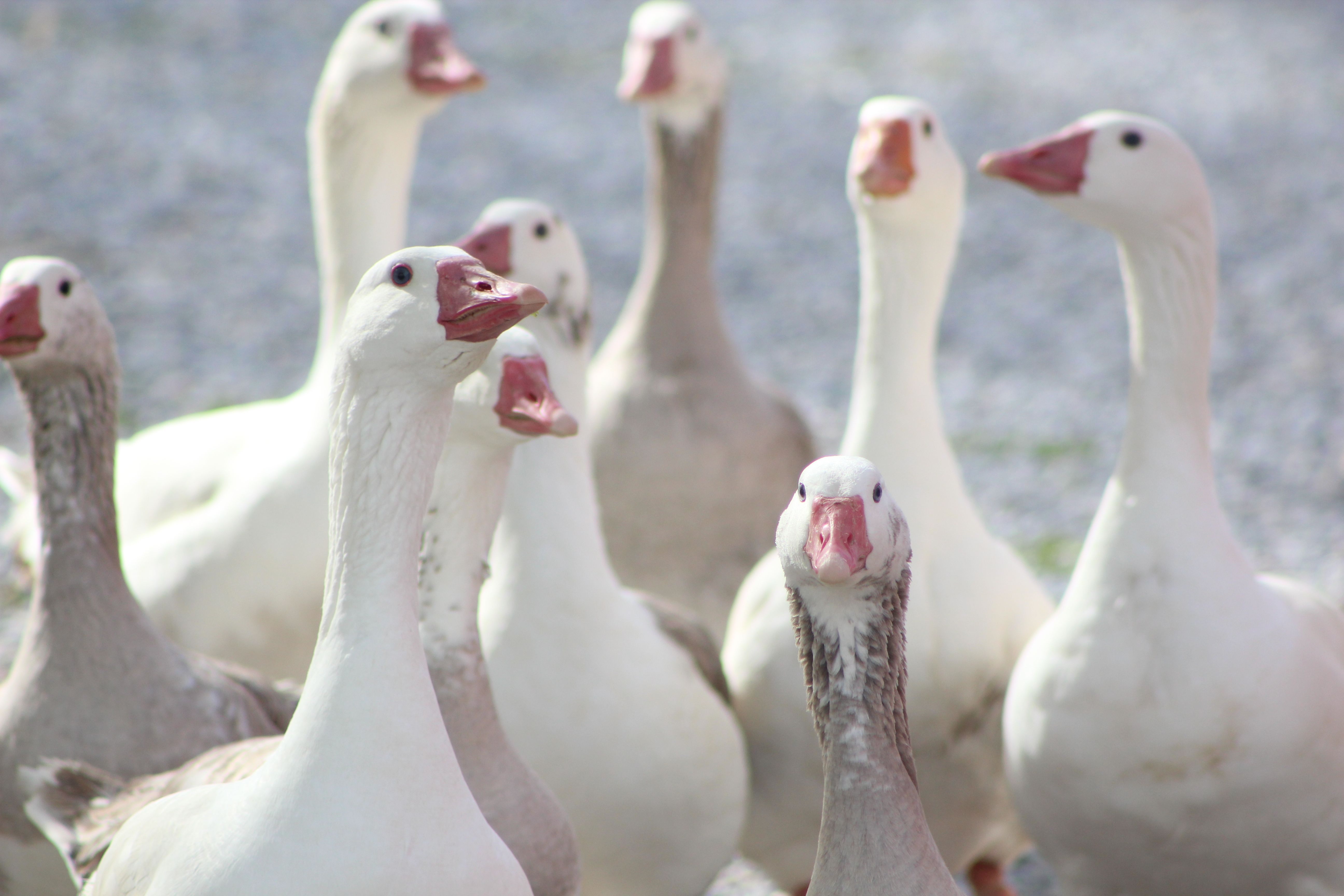
Cotton Patch geese at Flip Flop Ranch (Photo: Flip Flop Ranch)
Geese have been gaggling around humans for millennia: they were domesticated in Egypt more than 4,000 years ago, and they’ve more than proved their use. They may not actually lay golden eggs, but in addition to providing eggs and down, they are excellent guardians, being both loud and willing to bite. In the 4th century B.C., a flock of geese that lived in a temple sounded the alarm about Gallic invaders. Later, other Europeans used geese to guard whiskey, and in South Vietnam, during the 1950s, they were used to protect aircraft from attack.
Geese can also be very smart and, ultimately, very tasty. Despite these appealing qualities, though, as a U.N. report put it, “geese have remained a neglected species.”
But geese did have a moment as valued members of farm society in the southeastern United States. Conveniently, geese will happily eat grasses that farmers think of as weeds, including nut grass, Johnson grass, and Bermuda grass. They are not interested in eating cotton. And so for many years, possibly stretching back to the early history of European settlement in this country, geese were sent out into cotton fields to clear out unwanted plants.
This strategy didn’t just work for cotton, either. There are many plants that geese are not so interested in—strawberry vines, mint, tobacco, beet leaves, asparagus stalks, potato plants, onions—and farmers, over time, came to use gaggles of geese to weed all sorts of fields. They were useful in orchards, too, where they’d wander between the trees and eat up fallen fruit. They’ve even been used as clean-up crews on pineapple and banana plantations.

Flip Flop Ranch geese, out on the lawn (Photo: Flip Flop Ranch)
Tom Walker went looking for Cotton Patch geese to guard his kennel. He shows dogs, and in Texas, he found copperhead snakes were too common and kept biting his dogs. “I started out to find me some of the geese like I knew when I was a kid, to kill the snakes,” he says.
When he didn’t find them in Arkansas, he started looking more widely, in Texas, Louisiana, Mississippi, Tennessee, the cotton-producing states of the South. He traveled more than 10,000 miles over two years looking for geese that were pure enough to start breeding the geese he remembered.
When I asked him why he did all that work and all that traveling, he had a simple answer. “They were becoming extinct,” he says. “They were nice geese that I grew up with, and I decided I didn’t want them to become extinct.”
But, by the time the breed was well established again, Walker was getting older and was hoping to find others to help keep these geese from dying out.
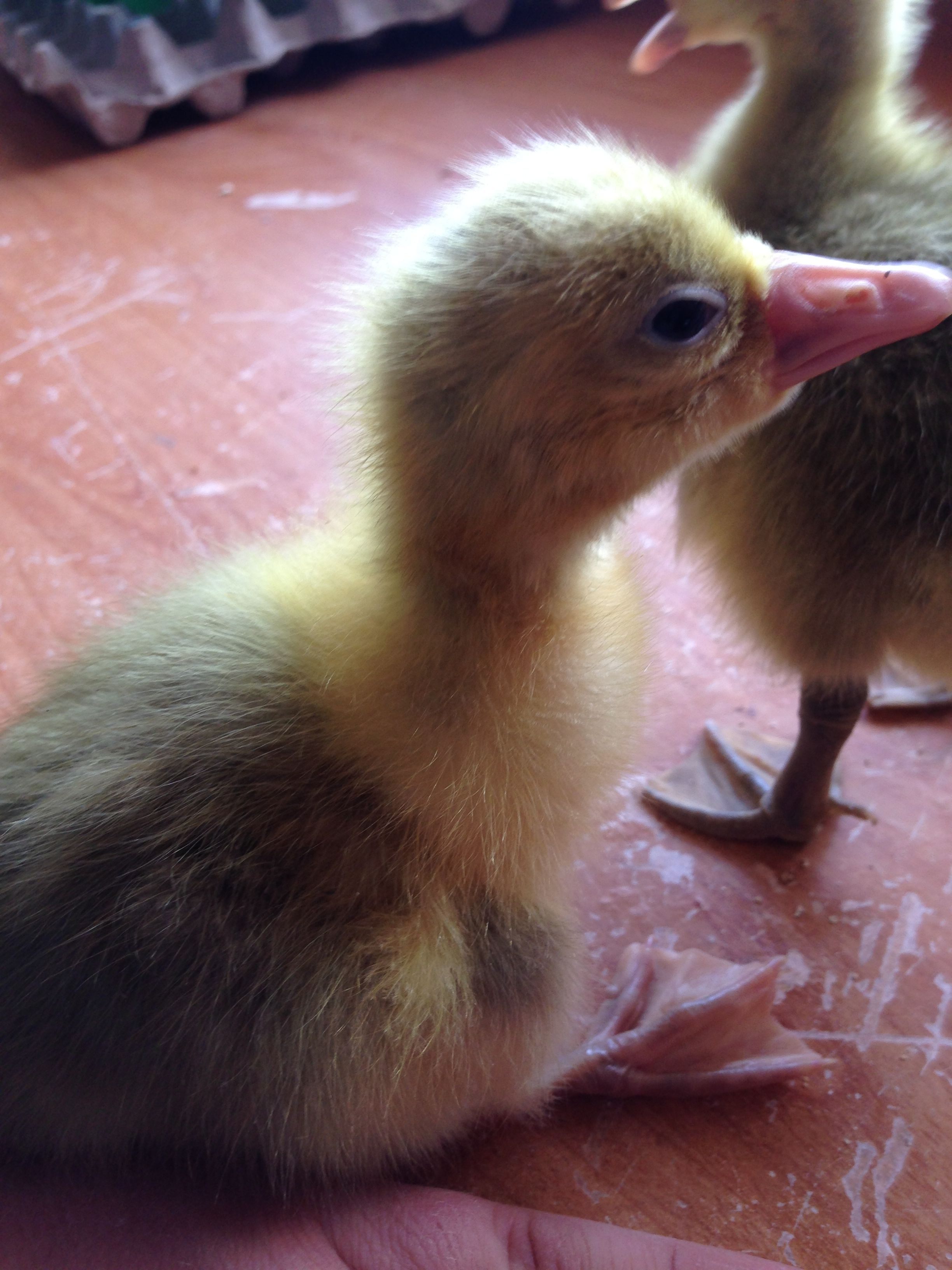
A Cotton Patch gosling (Photo: Flip Flop Ranch)
At Flip Flop Ranch, in California’s Lucerne Valley, Serina Harvey had fallen in love with Cotton Patch geese. Part of the family-run farm’s mission is to raise breeds in danger of disappearing, and while they had some chickens, it seemed like geese would be a good addition.
Harvey, the farm’s program manager, had read about Cotton Patch geese, and they seemed like they’d be good fit for the farm and its kid-oriented programs. “They’re very friendly, and a lot of geese aren’t,” she said. “You can breed for certain personalities in your animals, and I wanted a breed that was gentle and friendly.” Cotton Patch geese, she says, will fall asleep on your lap like a dogs. Especially when they’re young. “You have little tiny goslings that come and cuddle in your lap, and you can’t resist that,” she says.
When she first started looking around for the geese, they weren’t easily found: it took her maybe a year before she discovered Tom Walker and his breeding operation. She bought a few Cotton Patch geese to start, and by the time Walker was looking for people to take on some responsibility for the future of the breed, Harvey was ready to step up. She and her sister drove from California to Texas to pick up nine pairs of geese, an ordeal that should that have taken just two or three days but stretched into a week when their van broke down…and then broke down again, with the geese already loaded into the back.
“Any time Texas is mentioned in my family, it’s like, agh, Texas, I hate Texas,” Harvey says. The way back to California, geese in dog kennels in the back of the van, was very, very long. “They’d be quiet, and all of a sudden all of them would just start honking,” she said.
Now, though, the geese are happily installed at the ranch, and the gaggle has grown to 50 members. “Every time you open the door, you get a parade of 50 geese galloping out of their barn. It’s the highlight of the morning,” says Harvey. “Instead of mowing, we just send the geese through.”
She also sells a lot of geese to people who’ll use them to clear up orchards or gardens (although geese in gardens is a more dangerous prospect: there are some plants beloved by humans that geese will eat). And there are more Cotton Patch goose breeders than at any time in recent memory. “In the past five years, it’s blown up,” says Harvey.
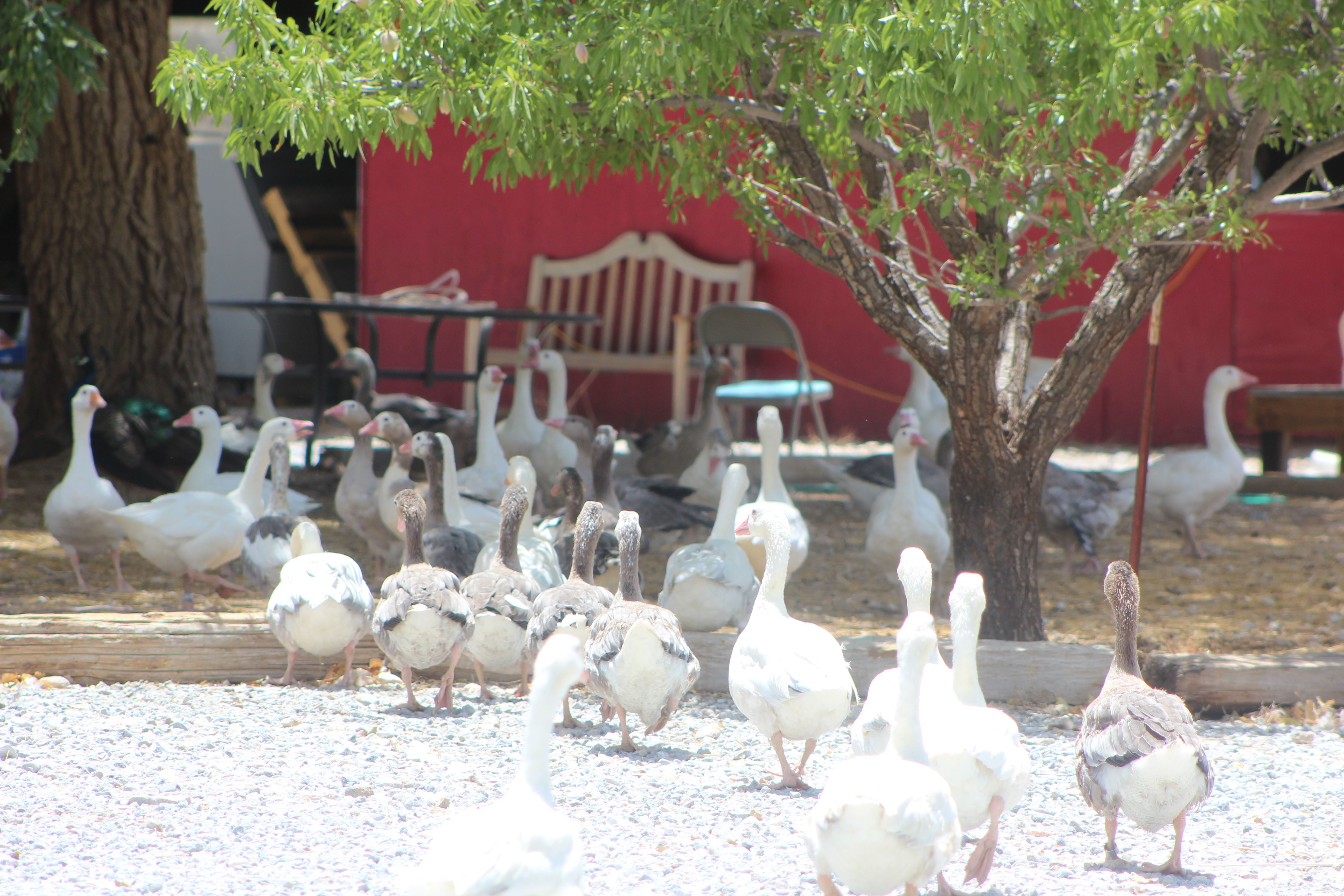
Geese on parade (Photo: Flip Flop Ranch)
This particular type of goose isn’t the only one that can work the fields, though. At Kochergan Farms, in Fresno, Calif., every year about 100 to 150 weeder geese take over the citrus orchards, which are filled with different varieties of oranges.
“They just walk the fields round and round, and get the weeds,” says Mike Kochergan, whose family has been farming in this area for decades. “That’s all they do, is eat weeds all day.”
The farm is 100 percent organic, so the geese are a very effective way of managing weeds and fallen fruit without chemicals. And, as a bonus, they provide some fertilizer to the orchards. That’s not always an advantage, though. Kochergan Farms also grows almonds, but the ducks aren’t allowed to work those plots, because almonds are harvested by shaking the trees and collecting the nuts from the ground.
“If the geese do their duty, there’s going to be some contamination there,” says Kochergen.



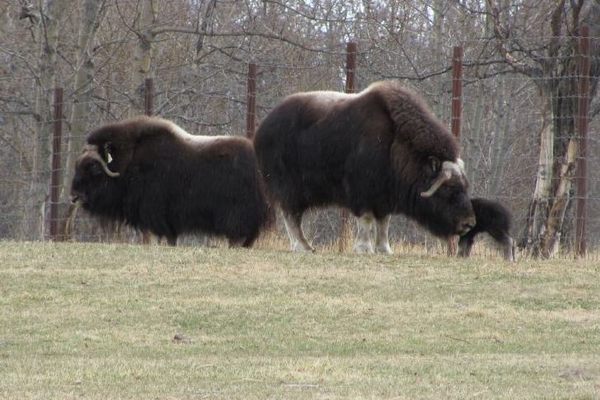
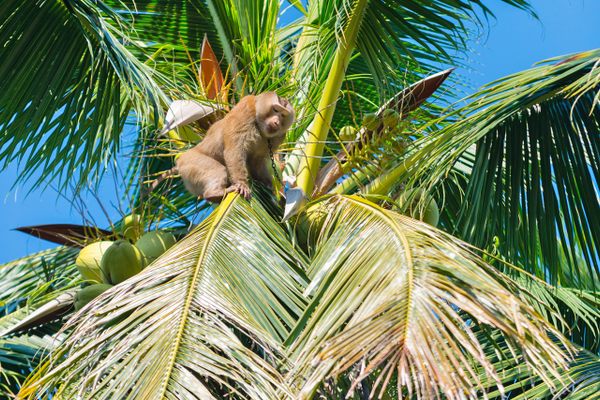











Follow us on Twitter to get the latest on the world's hidden wonders.
Like us on Facebook to get the latest on the world's hidden wonders.
Follow us on Twitter Like us on Facebook